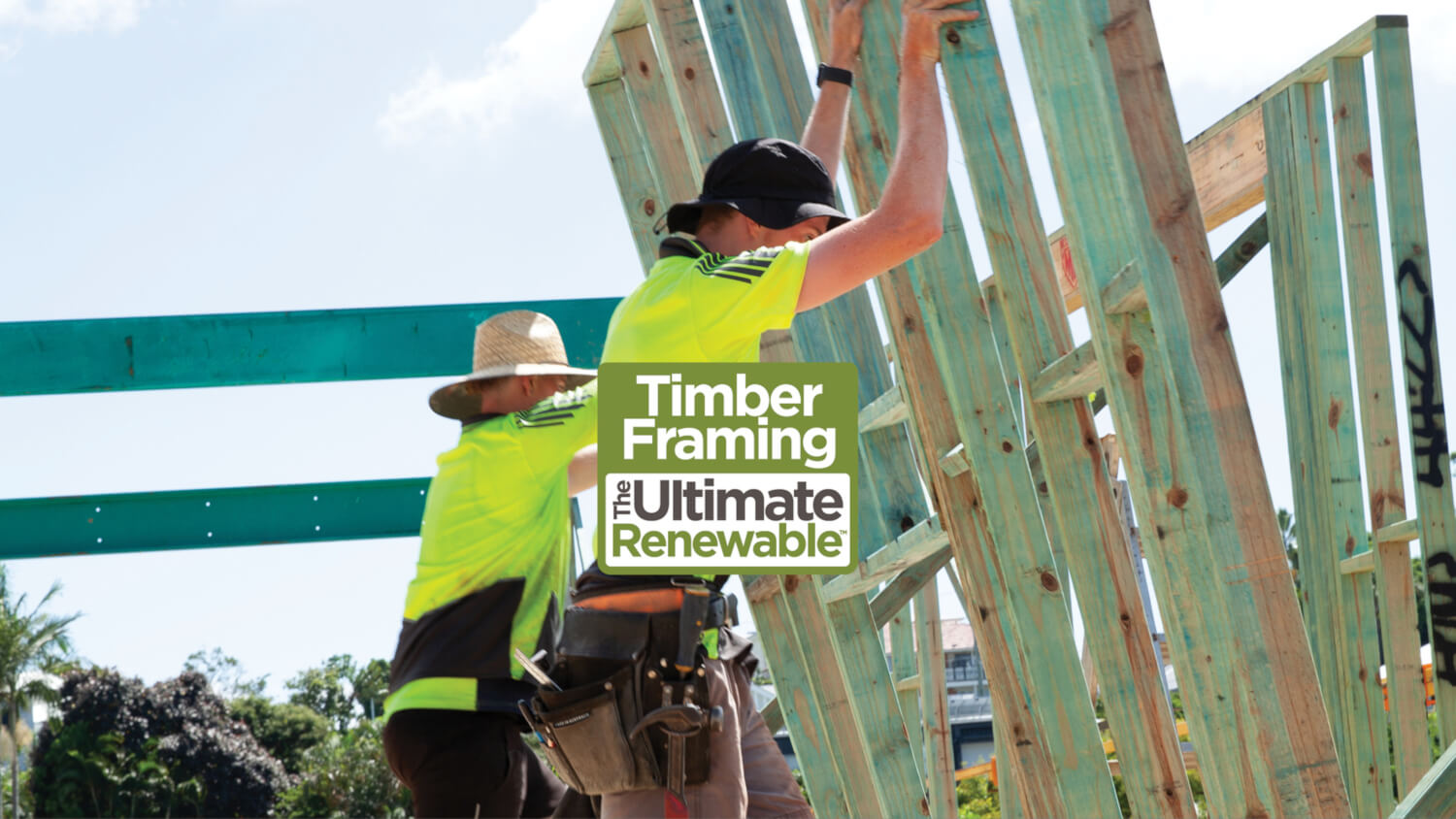
This piece was written and provided by the Timber Framing Collective.
Our industry plays a central role in tackling climate change and preserving the place we all call home, especially when we build with timber framing—the resource that not only has the lowest embodied carbon, but removes more carbon than it emits.
A recent study found that the construction industry accounts for around 40% of the world’s greenhouse gas emissions, with embodied carbon—the carbon emissions from building material production—one of the biggest offenders (World Green Building Council, 2019).
While innovation in the industry means we’re continually reducing the impact of energy intensive material production, nothing beats building with sustainable, renewable and natural timber framing.
Timber framing has the lowest embodied energy
Quite literally growing on trees, timber production requires minimal manufacturing and has the lowest embodied energy of all mainstream building materials. This means that the entire production process of the timber in framing—from planting and harvesting to manufacturing, transportation and installation—uses the least amount of energy, resulting in up to 10 times less carbon emissions than other building products (Tas Timber, n.d.).
What’s more, new technologies and innovations are increasing yields from every log and decreasing waste. And even after installation, timber framing’s natural insulating properties means households use less energy when it comes to heating and cooling, reducing emissions further.
Timber framing locks up carbon
It’s not just timber framing’s low embodied energy that makes it the go-to for climate conscious builders, fabricators, architects, engineers and homeowners, but also its incredible carbon storage properties. Both factors make the timber in framing carbon positive, which means its production process—from sapling to installation—removes more carbon than it emits.
Trees naturally remove greenhouse gases
Trees remove massive amounts of CO2 from the atmosphere, capturing the carbon and storing it for the life of the wood. In Australia alone, sustainable forests form a network that removes around 57 million tonnes of carbon dioxide from the atmosphere each year, offsetting the entire amount Australian manufacturing companies emit in a year (Leys, n.d.).
New trees absorb more CO2
Trees are only harvested after around 30 years of growth, when their rate of carbon capture slows significantly. And for every tree that’s harvested, at least one more is planted in its place. This results in around 70 million young trees planted in Australia per year, ready to pick up the baton and absorb CO2 at a much faster rate.
Timber framing can last for hundreds of years
When wood is transformed into timber products, like timber framing, it continues to store carbon for its life. In Australia, an estimated 94 million tonnes of carbon is stored in harvested wood products (NSW Department of Primary Industries, 2022).

What about timber’s end of life?
Timber framing doesn’t just store carbon while it’s standing, even its end-of-life processes have environmental benefits.
Reusable
Timber framing can be easily dismantled and transformed into other timber products that keep carbon locked up, even if it’s eventually reused as wood chips. And many timber products can be recycled.
Landfill
Pioneering research by the NSW Department of Primary Industries found that wood products like timber framing in landfill experience minimal decay (2-3 times less than current assumptions) with only 1.4% of carbon lost from Australian landfills over a very extended period of time (DPI, 2022). This means that timber framing in landfill is a long-term store of carbon.
Bioenergy
Old timber framing, and the waste produced during its production, can be converted into biofuels, and burned for energy or used as fuel substitutes for transportation or industrial processes (NRCAN, 2020). Australian sawmills, for example, use sawdust in their kilns to dry timber (DPI, 2022). Although the burning of these fuels releases carbon dioxide back into the atmosphere, it’s a greener alternative to fossil fuels, repurposing a waste product and coming from a renewable source (NRCAN, 2020).
So regardless of whether timber framing is reused or recycled, burnt for energy or disposed of in landfills, the outcome is great news for our planet.
It’s time to work with nature
It’s time to help tackle climate change by choosing and promoting timber framing—the resource that removes carbon from the atmosphere and protects the air we breathe.
Download a suite of free to use resources from Timber Framing – The Ultimate RenewableTM, share them with your networks and let’s build a better world.
References
World Green Building Council. (2019). Advancing Net Zero Status Report 2019. Retrieved from: https://worldgbc.org/article/advancing-net-zero-status-report-2019/
Tas Timber. (n.d.). Timber products use less energy. Retrieved from www.tasmaniantimber.com.au/ brochures and http://www.timberqueensland.com.au/Docs/Benefits%20of%20Timber/Fact%20Sheets/Factsheet_01.pdf
Leys, A. J. (n.d.) PhD for Forest Learning. How is carbon stored in trees and wood products? Forest and Wood Products Australia. Retrieved from: https://forestlearning.edu.au/images/resources/How%20carbon%20is%20stored%20in%20trees%20and%20wood%20products.pdf
NRCAN. (2020). Forest Bioenergy. Retrieved from: https://www.nrcan.gc.ca/our-natural-resources/forests/industry-and-trade/forest-bioeconomy-bioenergy-bioproducts/forest-bioenergy/13325
Xiemes, F. (2022). Department of Primary Industries Forest Science: Wood and the Carbon Economy. NSW Government. Retrieved from: https://www.dropbox.com/scl/fo/htetbvdrc3qebq9oluq1i/h?dl=0&rlkey=fovjxrvrhzbp49lyvztms8e3k
Our Principal Partners



